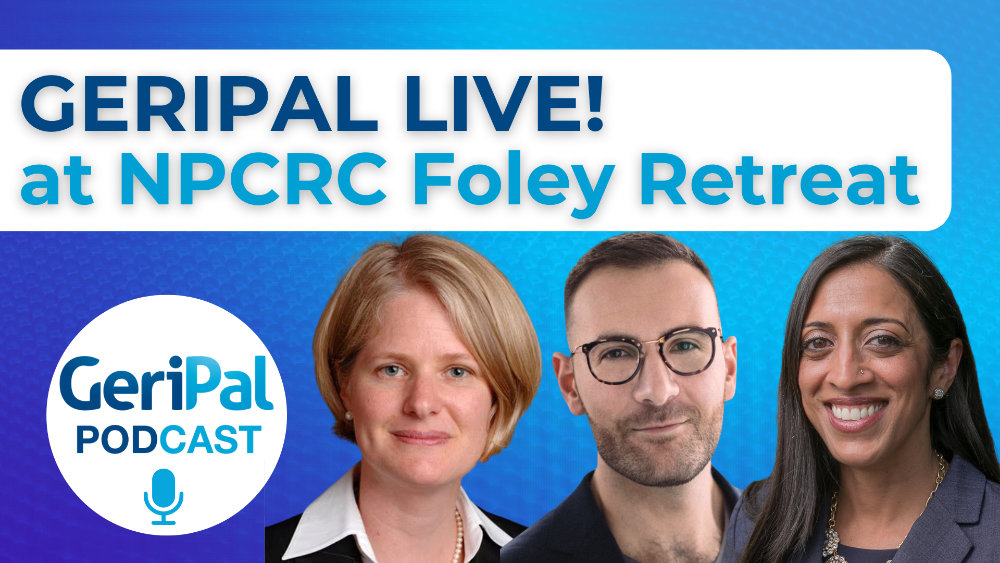The John Hartford Foundation supported the inaugural summit of leaders from geriatrics and palliative medicine in July to encourage opportunities, challenges, and next steps for the field. I interviewed Seth Landefeld, chief of Geriatrics at UCSF and San Francisco VAMC, about his experience. Seth Landefeld, Sean Morrison, and Bob Arnold previewed and approved of this post.
On the impetus for the meeting: “The genesis for the meeting occurred 2-3 years ago when we realized that geriatrics and palliative medicine were competing for the same pool of internal medicine residents for fellowship training and that our training should be collaborative, not competitive. In subsequent discussions, we realized that the common ground between the two fields is so much greater than the issue of collaboration in fellowship training. I and several other board members of the American Geriatric Society, including Wayne McCormick, Greg Sachs, and Linda Fried, took this issue to the John Hartford Foundation, which has supported the academic development of both geriatrics and palliative medicine. We asked Chris Langston and Gavin Hougham at the Foundation whether they could help us build the geriatrics-palliative medicine common ground on a national level.”
On the structure of the meeting: “Christine Ritchie chaired the planning committee, which included Jean Kutner, Greg Sachs, Bob Arnold, Wayne McCormick, and me. The meeting included the President-elect and key staffers of each organization (Sharon Brangman and Nancy Lundebjerg for American Geriatrics Society and Sean Morrison, Dale Lupu, and Sally Weir for American Association of Hospice and Palliative Medicine), the current President of AAHPM (Gail Cooney), leaders of the Hartford Foundation (Cory Rieder, Chris Langston, and Gavin Hougham) as well as leaders in both fields. We were divided into working groups around education, research, clinical models, leadership, and public policy.”
On what was accomplished: “We asked, what is important, and what are the low hanging fruit? Where are the opportunities for collaboration? We created a statement that will be taken to each organization for feedback and support, with the idea of issuing a joint statement in the future. Something along the lines of: both AGS and AAHPM are committed to developing systems that will provide care for patients with advanced illness and their families. We saw opportunities for collaboration in joint fellowships between the two fields. One area of obvious overlap is the care of patients in nursing homes. As we try to conceptualize palliative care as more than just care at the very end of life, one can think of nearly all patients living in nursing homes as being persons who need good palliative care as well as good geriatrics, and yet almost no palliative care programs currently exist in nursing homes. ”
On challenges: “One of the challenges will be getting more non-geriatrician palliative care providers interested in and actively committed to working on these issues. It was good that we had people like Janet Abrahm (oncologist and palliative medicine physician), Gail Cooney (neurologist and current AAHPM President) and a few other non-geriatricians from the palliative care field present. We need to reach out to other organizations, such as the American Medical Directors Association (AMDA). We need to make sure we have institutional memory about the work we’ve accomplished. The turnover of board members of these professional organizations is rapid, whereas the staff of the organizations stays relatively constant. It was important that high level staff members from each organization played leading roles at the meeting.”
I’ll leave it open to others to comment, only to say I think this idea of a collaborative approach is terrific, and this sort of energy and direction was exactly what led us to create GeriPal in the first place. What do you think about finding common ground between geriatrics and palliative care? What are the tensions and opportunities? What do you consider important, and what are the low hanging fruit?




